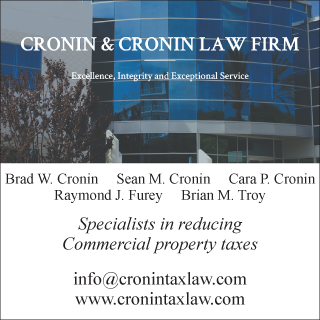“Tax-free” exchanges may not be free of tax: Business owners must understand this distinction - by Lou Vlahos

Farrell Fritz, P.C.
Business owners love to hear the words “tax-free” when considering the disposition of business assets. Unfortunately, many fail to grasp that a tax-free disposition is rarely free of tax in the sense of never being taxed; rather, the recognition and taxation of the gain inherent in the asset is deferred.
Business owners must understand this distinction, especially in the current environment of private equity deals and the required partial “roll-over” by the target’s owners.
When a taxpayer disposes of property, the gain realized is equal to the excess of the cash plus the fair market value (FMV) of other property received by the taxpayer over the taxpayer’s basis for the property.
When the taxpayer receives property that does not represent a “continuation” of the taxpayer’s investment in the property he transferred, the taxpayer must recognize and pay tax on the gain realized. This is what occurs when a taxpayer exchanges property for cash.
So, what kind of property must a taxpayer receive in order to enjoy a tax-deferred exchange?
Most business owners are familiar with the “like-kind exchange” of one investment real property for another.
Many are also familiar with contributions of property to a corporation in exchange for stock. In general, if the contributors “control” the corporation after the exchange, their property transfers will not be taxable.
When property is contributed to a partnership in exchange for a partnership interest, the transfer will generally not be taxable, even if the taxpayer receives a less-than-controlling interest in the partnership.
In each of these “tax-deferred” dispositions, the taxpayer’s basis for the equity interest received will equal his basis in the property transferred. Similarly, the entity to which the contribution was made will take the property with a basis equal to the taxpayer-contributor’s basis in the property. In this way, the gain inherent in the property is preserved.
The analysis changes slightly when a taxpayer receives some cash in connection with the property transfer. In that case, because the taxpayer is partially “discontinuing” his investment in the transferred property (by receiving cash), some gain must be recognized.
In the case of property contribution to a corporation in exchange for stock, the taxpayer must recognize an amount equal to the lesser of the cash received or the gain realized in the exchange.
Thus, if the cash received is less than the gain realized, the taxpayer will recognize, and be taxed on, a portion of the gain equal to the amount of cash.
When the cash received by the taxpayer is at least equal to the gain realized, the entire gain must be recognized and taxed.
In the case of a partnership, the contribution of property in exchange for a partnership interest plus cash is treated as two transactions: a sale of property with a FMV equal to the cash paid by the partnership, and a capital contribution of the balance. The gain recognized by the taxpayer is determined by allocating the taxpayer’s basis in the property between the sale and the contribution transactions.
A taxpayer who contributes property to a closely-held business in exchange for some combination of equity and cash is usually transferring an asset over which he has control. He gives up this control and accepts what is usually a minority interest that is as illiquid as the property for which he exchanged it in order to attain other benefits, for example, the assistance needed to further grow the business, participation in this growth, and deferral of gain recognition.
If the desired tax deferral is jeopardized because the taxpayer is receiving “too much” cash, must the exchange be restructured? Should there be a gross-up to cover the tax, though this may be an expensive proposition for the entity? Should there be more equity and less cash in the deal so as to reduce the gain recognized, notwithstanding the greater investment risk it presents? Will other investors accept the greater dilution? The matter will ultimately be determined by the parties’ relative bargaining power and desire to close the deal.
More detailed information on tax-free exchanges can be found on the firm’s blog, Tax Law for the Closely Held Business, www.taxlawforchb.com. (Search for “tax-free exchange.”)
"Courtesy of Long Island Business News.”
Lou Vlahos is a tax partner at Farrell Fritz, P.C., Uniondale, N.Y.
Suffolk County IDA supports expansion of A&Z Pharmaceuticals


The evolving relationship of environmental consultants and the lending community - by Chuck Merritt
When Environmental Site Assessments (ESA) were first part of commercial real estate risk management, it was the lenders driving this requirement. When a borrower wanted a loan on a property, banks would utilize a list of “Approved Consultants” to order the report on both refinances and purchases.









.jpg)